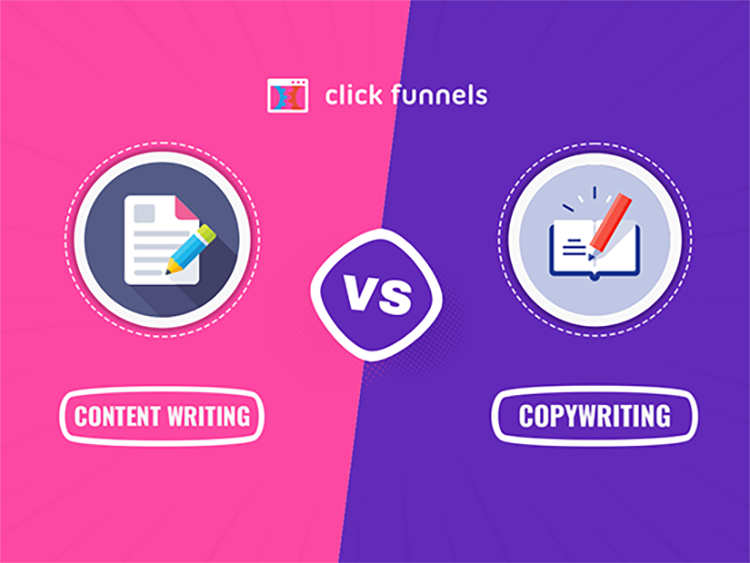Free
Content Writing Vs Copywriting – Understanding the Difference
If you’ve ever been confused about the terms “content writing” and “copywriting,” you’re not alone. These terms seem to be used interchangeably in the world of online marketing. But let me tell you, there is a difference! And it’s important for you to know about it.
As someone who dabbles in both content writing and copywriting, I often find myself explaining this distinction to fellow marketers and business owners. So, let me break it down for you.

What exactly is the difference between content writing and copywriting? Let’s dive in and define each term, exploring their purposes and goals.
Content Writing Defined:
Content writing is all about creating engaging, informative, and entertaining material that people can consume online. Whether it’s blog posts, articles, eBooks, or case studies, content writers aim to provide valuable information to their readers.
The primary goal of content writing is to establish authority and credibility in a specific industry. By consistently sharing relevant and high-quality content, businesses can attract and retain an audience, build trust, and establish a strong brand identity.

While content writing may not directly promote a product or service, it plays a pivotal role in a marketing strategy by nurturing relationships with potential customers, keeping them informed, and positioning the business as an industry expert.
Some examples of content writing include blog posts, whitepapers, eBooks, how-to guides, case studies, and social media posts.
Copywriting Defined:
Now, let’s switch gears to copywriting. Unlike content writing, copywriting is all about persuasive writing with one primary objective – to make the reader take a specific action. Whether it’s making a purchase, signing up for a newsletter, or downloading an eBook, copywriters use their words to convert readers into customers.

Copywriters craft compelling messages that directly speak to the needs, desires, and pain points of the target audience. Through advertisements, sales letters, landing pages, email campaigns, and product descriptions, they aim to generate revenue by convincing people that the promoted product or service is the solution to their problems.
Some examples of copywriting include advertisements, sales letters, landing pages, email marketing campaigns, product descriptions, and press releases.
The Key Difference:
The key difference between content writing and copywriting lies in their goals and approach. Content writing focuses on building trust and credibility over time, using informative material to foster long-term relationships with an audience. On the other hand, copywriting aims to drive immediate results and conversions by persuading readers to take action.
Understanding these differences is crucial for marketers and business owners as they craft their overall marketing strategy and allocate resources to each type of writing.
So, now that you know the difference between content writing and copywriting, you can confidently utilize both in your marketing efforts to attract and convert customers.
Creating great content is all about delivering value and relevance to your audience. By providing information that educates, entertains, or inspires them, you can stand out in the sea of content and build a loyal following.
But it’s not just about the information you provide – it’s how you present it. Use storytelling techniques to make your content more engaging and memorable. Share real-life examples, anecdotes, or case studies to illustrate your points and connect with your audience on a deeper level.
Don’t forget about SEO. Optimizing your content for search engines increases your visibility and helps you reach a wider audience. Research relevant keywords and strategically incorporate them into your content. But remember, quality should always come first. Focus on creating exceptional content that your audience will love.
Make your content easy to read and digest by breaking it up into smaller chunks. Use headings, subheadings, bullet points, and plenty of white space to organize your ideas. This will not only make your content more inviting but also encourage deeper engagement from your audience.
Lastly, give your audience clear next steps. Whether it’s suggesting related articles, encouraging comments, or inviting them to subscribe to your newsletter, guide them through their content journey and foster a sense of community.
Now, let’s talk about copywriting. Grabbing attention with a killer headline is key. Make it intriguing, emotionally engaging, and relevant to your audience to create a strong first impression.
To connect with your audience, you must understand them. Take the time to research their desires, concerns, and motivations. Tailor your message to speak to their unique needs and aspirations, and make it feel genuine and personal.
When it comes to copywriting, focus on the benefits, not just the features. Show your audience how your product or service can improve their lives and solve their problems. By highlighting the value you bring, you’ll inspire them to take action.
So whether you’re a content writer or a copywriter, these best practices will help you create captivating and effective content that resonates with your audience.
Discover the Power of Clear and Concise Writing
Attention spans are shrinking every day, so it’s crucial to be clear and concise with your message. Ditch the unnecessary fluff and get straight to the point using simple language. Don’t worry about impressing anyone with fancy words – focus on effectively communicating your ideas.
Master the Art of the Call-to-Action
A well-crafted call-to-action is like the cherry on top of your copywriting sundae. It’s the final push that encourages your audience to take action. Whether it’s buying a product, subscribing to a newsletter, or sharing your content, make it clear and easy for them to do so. Use persuasive language and create a sense of urgency to drive conversions through the roof.
The Key to Effective Communication
Understanding the differences between content writing and copywriting is crucial for marketers and business owners. Both play distinct roles in online marketing. Content writing focuses on providing value and building relationships, while copywriting drives specific actions for immediate results.
By harnessing the power of both disciplines, you can create compelling content that informs, entertains, and motivates your audience to take action. Armed with this knowledge, you can craft impactful marketing strategies that truly resonate with your target audience.
Ready to take your writing to the next level? Start creating content that captivates and converts.
>>>Join The One Funnel Away Challenge<<<





























